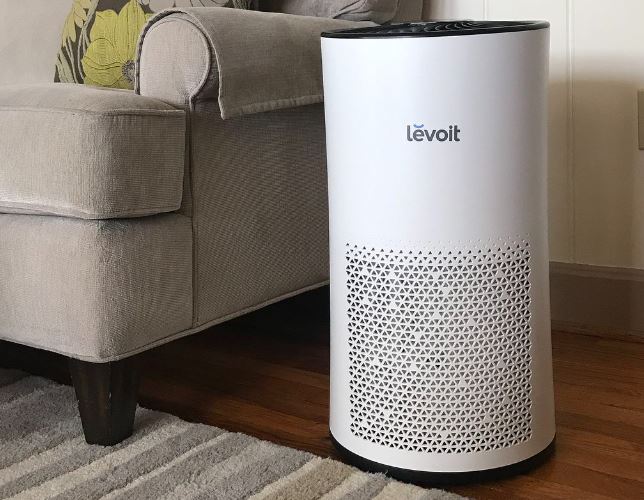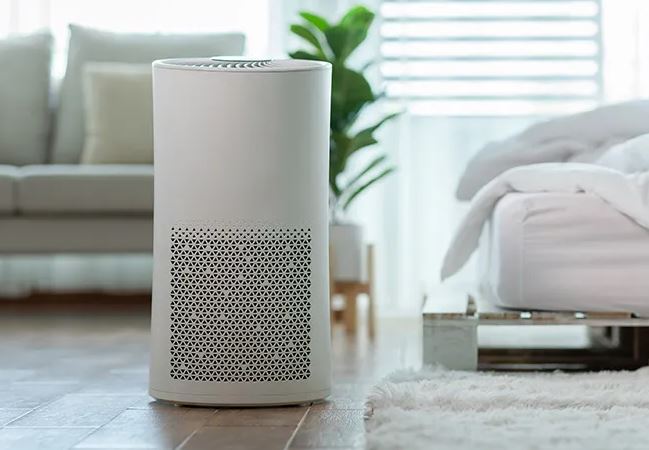Pamper Your Lungs: Give Them the Gift of Clean Air
Wiki Article
In an era of heightened health awareness, the air quality indoors and out has become an increasingly important consideration for individuals across the globe. With growing concerns over air pollution and a greater awareness of the effects of indoor pollutants on our health, it's no surprise that the air purifier industry is experiencing tremendous growth.
Air purifiers are devices that clean the air of pollutants in a space, promoting healthier indoor air. They are ideal for people with allergies, asthma, or other respiratory issues as they can drastically decrease the amount of allergens, pollutants, and irritants in the air. Healthy individuals, too can rely on the added protection of air purifiers, as they offer peace of mind and an extra layer of protection against airborne illnesses.
This article will delve into the world of air purifiers, exploring their benefits, the array of models available, crucial aspects to think about when making a purchasing decision, and maximizing your air purifier's potential. By the end, you should have a thorough grasp of air purifiers and be able to choose wisely about whether investing in one is the right choice for you and your loved ones.

Unraveling Indoor Air Contaminants and Their Effects on Well-being
To grasp the importance of air purification, it's key to comprehending the kinds of pollutants they target and the likely impact of contact with these pollutants.
Indoor air pollutants can be generally classified into the following three categories:
- Particulate Contaminants: This includes solid particles and liquid droplets suspended in the air. Examples include smoke, dust, pollen, pet dander, and mold spores. Particulate matter can cause respiratory issues and cause allergic flare-ups.
- Understanding Volatile Organic Compounds: VOCs are gaseous compounds released from solids and liquids. Sources of VOCs include cleaning agents, paints, aerosol sprays, pesticides, and similar products. Exposure to VOCs can lead to irritation of the eyes, nose, and throat, as well as headaches and nausea.
- Biological Hazards: These include bacteria, viruses, mold, and mildew. They can cause a spectrum of health concerns, from mild allergic reactions to severe infections.
The effects of these pollutants on human health can greatly vary. For those suffering from respiratory ailments or weakened immune systems, exposure to indoor air pollutants can lead to significant health complications. For those in good health, chronic exposure to certain pollutants can increase the risk of respiratory conditions and other health concerns over time.

How Air Purifiers Work
Air purifiers use a variety of physical and chemical processes to effectively eliminate contaminants. Understanding the basic mechanisms employed by purifiers will help you grasp how they work and the different types available on the market.
Here are the core processes and cutting-edge technologies used in air purifiers:
- Filtration Excellence: This is the most widely used approach used in air purifiers. It involves using specialized filters to capture particles as air is passed through the filtration system. The filtration media varies, each designed to target specific particle sizes and types. For example:
- Pre-filters: These are usually the first line of attack, capturing larger particles like dust and hair.
- HEPA Filters: The Gold Standard: HEPA filters are highly effective at capturing microscopic particles, including bacteria, viruses, pollen, and dust mites. To be labeled a true HEPA filter, it must trap a minimum of 99.97% of particles down to 0.3 microns in size.
- charcoal filtration: These filters are designed to reduce VOCs and odors.
- Ionizers: Ionizers use electrical charges to create negatively charged ions, which latch onto airborne particles. The particles become charged, causing them to stick to surfaces or the purifier.
- Ozone Generators: Some air purifiers use ozone, a powerful oxidant, to break down pollutants. While effective, ozone can also be harmful to human health so these types of purifiers should be used with caution and only in unoccupied spaces.
- Ultraviolet (UV) Light: UV light can be used to destroy biological contaminants like bacteria, viruses, and mold spores. UV light is often used in combination with a filter to eliminate particles, while UV light ensures any remaining biological contaminants are destroyed.
Selecting the Perfect Purifier
With a plethora of options available, selecting the ideal air purification system can be a challenging endeavor. It's important to consider several factors to ensure you make the correct choice for your particular needs and room size.
Here are some essential factors to weigh:
- Sizing Up the Room: Air purifiers are typically designed for specific areas, so it's important to choose a model that can adequately cater to the room size. Most purifiers will list a maximum room size or a Clean Air Delivery Rate (CADR), which indicates the rate at which it can deliver clean air.
- Type of Contaminants: Identify the types of pollutants you want to target. If you suffer from allergies, look for a purifier with a HEPA filter. For reducing unwanted smells, consider a model with a carbon filter. If you're concerned about pathogenic microorganisms, a purifier with UV light technology might be best.
- Quiet Operation: Air purifiers can produce a range of noise outputs, so if you plan to use it in a quiet bedroom or tranquil space, look for models with a low-noise or sleep mode.
- Long-term Considerations: Consider the regular maintenance and associated costs of the purifier. HEPA filters, for example, typically need to be replaced every 6-12 months, depending on use and environmental factors. Remember to budget for filter replacements when making your choice.
- Enhancing Your Experience: Many purifiers offer smart features like automatic modes, air quality monitoring, and wireless control, allowing wireless control and real-time data. These features can enhance the convenience and effectiveness of your purifier.
Maximizing the Benefits of Your Air Purifier
Once you've made your selection and installed it, there are several things you can do to ensure it operates at optimal levels and delivers the greatest advantages:
- Strategic Positioning: Position your purifier in an central location, free from obstacles, to ensure effective airflow. Avoid placing it near external openings as drafts can impact its efficiency.
- Round-the-clock Operation: For the best results, it's recommended to run your purifier around the clock. Many models have energy-saving features or smart modes that adapt to the air quality, so you can maintain fresh air without excessive energy costs.
- Filter Maintenance: Regularly follow the manufacturer's filter replacement guidelines. Over time, filters become filled with trapped particles, impacting performance. Set a reminder for filter changes so you don't forget.
- Minimize Indoor Pollutants: Alongside using an air purifier, take steps to minimize indoor air pollutants. This could include regularly vacuuming and dusting, using natural cleaning products, and minimizing the use of strong chemicals or aerosols. Report this wiki page